Back in December, I did some driving around Gaithersburg in Montgomery County, Maryland with a friend of mine (this friend) who lives in the area. Gaithersburg is a really interesting outer suburb of Washington, D.C., and the area is home to a lot of experimentation in urban form—doing more, in various ways, with suburbia than just strip malls, highways, and detached houses.
Because so much land is already built out under single-family zoning closer in to D.C., the less populated and still somewhat rural upper half of Montgomery County is seeing a boom in new construction. Our trip was to explore some of these new developments. (There’s really so much to be said about the fact that the density gradient is backwards in places like this—urban core, inner-ring suburbs with single-family zoning, and outer-ring suburbs with much denser housing.)
The Gaithersburg area is home to Kentlands, one of the first New Urbanist communities, built to resemble the residential streets of a classic town, rather than a standard subdivision. It’s home to the RIO Lakefront development, a sort of proto-New Urbanist outdoor shopping and lifestyle center. And it’s home to Crown, a town-center style development with a square, some commercial streets, and apartments, townhouses, and detached houses, all on a rough street grid. I’ll be doing separate posts on Kentlands and RIO. This post was inspired by Crown.
Now there is still a lot of pretty standard suburban development going on, but these “town centers” are increasingly popular. Some have that unmistakable movie-set feel, while others are quite lovely and pleasant. The mixing of uses and housing types, and the proximity to some integrated retail and dining, is a selling point in these developments.
Anyway, however, this has nothing to do with my headline. As we walked down block after block of townhomes—and drove past a few other similar, large developments—I had a thought. What “housing crisis”? It looks like we’re building as far as the eye can see, and at some point we’ve just built enough, right? Here’s what we saw:
What does this look like to you? I can see celebrating all this new housing in a lot of different forms, and at different price points. I do celebrate that. But I can also see questioning its far-flung location—I question that as well. And when you’re in the middle of it, it can feel like we’re building so much. What about giving the construction a break? What about keeping some countryside intact?
Well, that’s the thing—it looks like we’re building as far as the eye can see. But we’re really not. Even townhomes are really not that dense; this town center at most is probably home to a few thousand people, which is a drop in the bucket for a county that borders one of the most important cities in the country, and which overall has a population of about 1 million people. All of the land that these modern developments take up is a fraction of the land taken up by midcentury single-family suburbs much closer to the city.
There are a couple of things going on here.
One is that building low- or mid-rise housing out at the edge like this intensifies the feeling that there’s so much development, because the transformation is so rapid. What was here before was farm fields, in most cases. Take a look at this old farmhouse, now under renovation to become a community center. There was something almost surreal about sprinting across somebody’s yard, between two brand new houses, into this little piece of untouched land from the property’s previous life.
These kinds of greenfield developments can punch above their weight in a bad way, by making it feel like everything is being paved over when the actual number of people living there is quite small, in comparison with the region overall.
Relatedly—and this can happen in cities, with high-rises or five-over-ones, as well—when a small geographic area is designated for major new construction, it also gives the impression that everything is constantly changing and construction goes on forever.
This is the irony, which I’ve only realized recently, and which makes sense but is not at all obvious: if everything was constantly changing, it wouldn’t feel like much was changing at all.
Now if you hate new housing, you might hear that as me arguing for slowly boiling the frog. But that’s not the sort of point I’m making. Change and adaptation is the natural state of the built environment. Not wholesale, but gradual, low-intensity, and more or less constant. Everything from knocking down walls to double an apartment or store space, to putting an addition on a house, to building an accessory unit, to an aging house being replaced with a small multi-unit building. This kind of change is like a background hum inherent to built places, and it’s basically unobjectionable and barely noticeable.
But when the vast majority of land that’s already built out and served by infrastructure is frozen in regulatory amber by zoning and/or NIMBYism, all of that natural and barely noticeable change that should be happening across all that land area is instead forced into geographically very small areas. And then, when the large-scale, disruptive activity in those very small areas doesn’t really solve the problem of high housing costs, it might feel natural to say “see, we’re building so much, and it doesn’t make any difference, so why build anything?” That’s what happens when you try to make up for decades of housing construction shortfalls. The best solution would have been to never allow so much prime urbanized land to be locked up forever under zoning codes from more than half a century ago.
Think of this as a sort of “law of the conservation of urban change”—you can’t stop growth, so when you try to, you end up pushing it into places where it makes less sense, costs more to build and maintain, and produces suboptimal built environments and transportation realities for people. You know those stretchy toy balls that you squeeze and part of it balloons and stretches way out? That’s what zoning inner-ring suburbs as single-family forever does to housing in a place like the D.C. area.
That is the real housing crisis, not too many townhomes. But since that thought occurred to me, and since there are real issues with building heavily out on the suburban fringe, I wanted to acknowledge that here.
Look for more illustrated posts from this Gaithersburg trip as well!
Related Reading:
Please consider upgrading to a paid subscription to help support this newsletter. You’ll get a weekend subscribers-only post, plus full access to the archive of nearly 300 posts and growing. And you’ll help ensure more material like this!




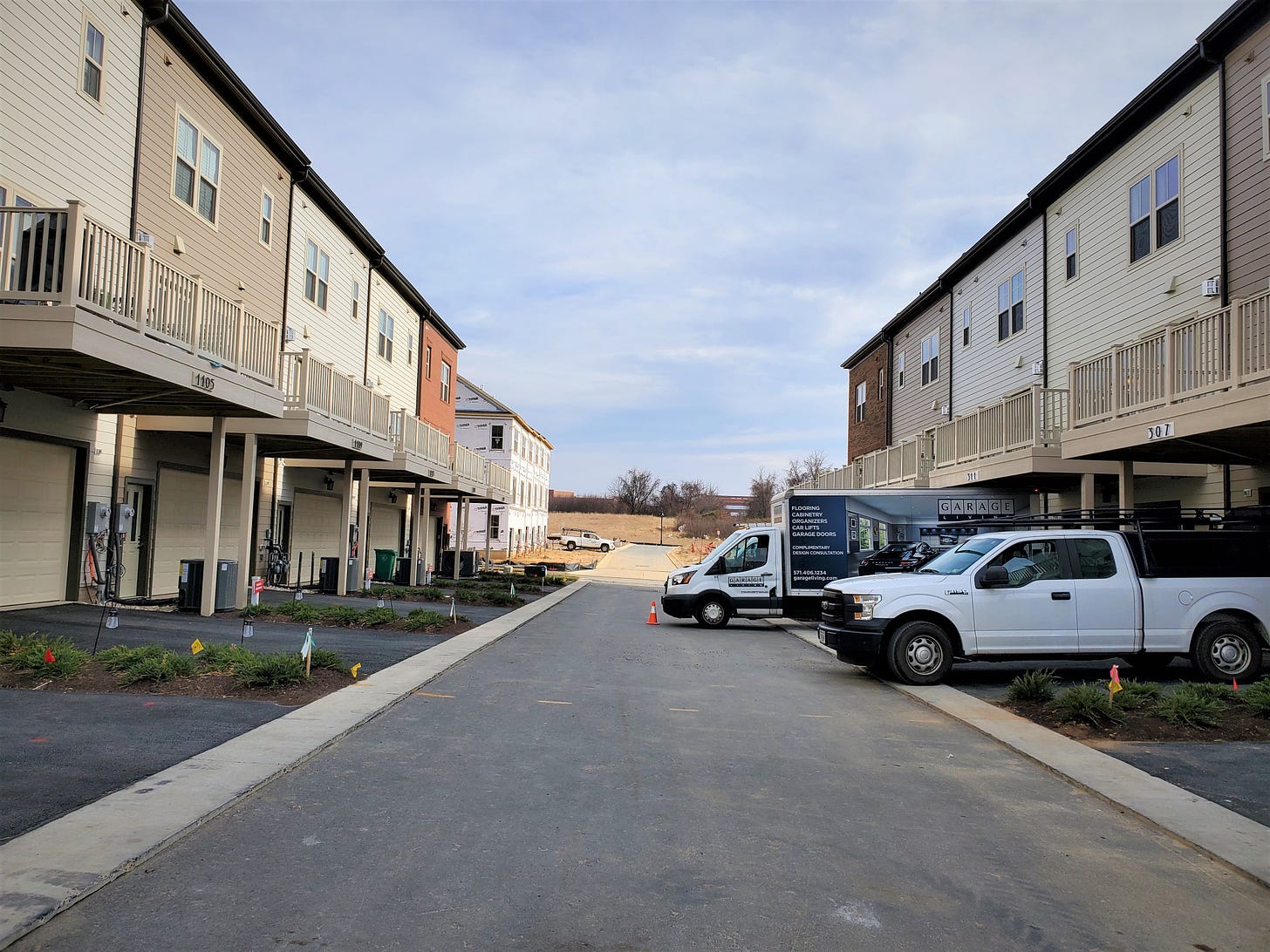
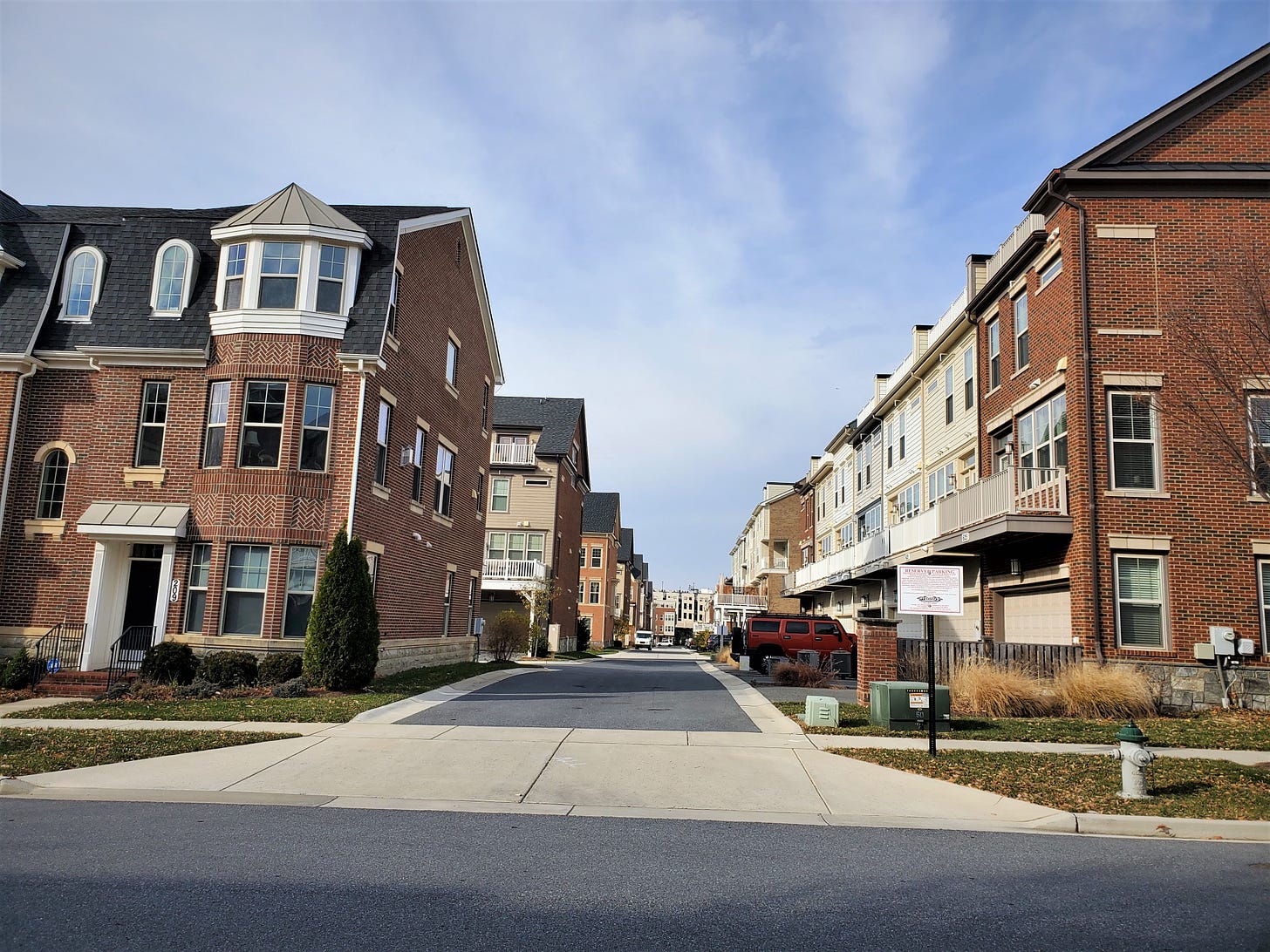

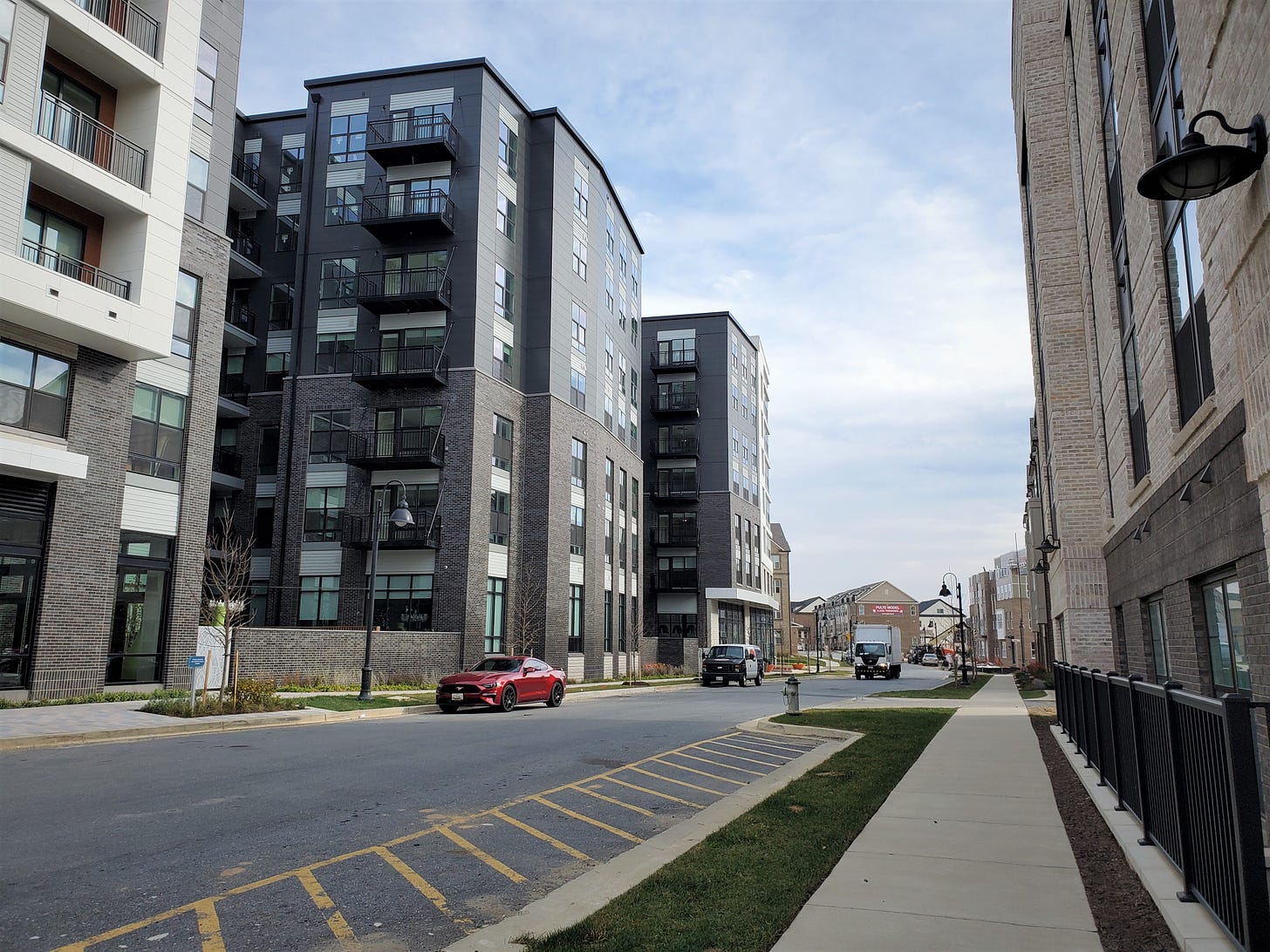
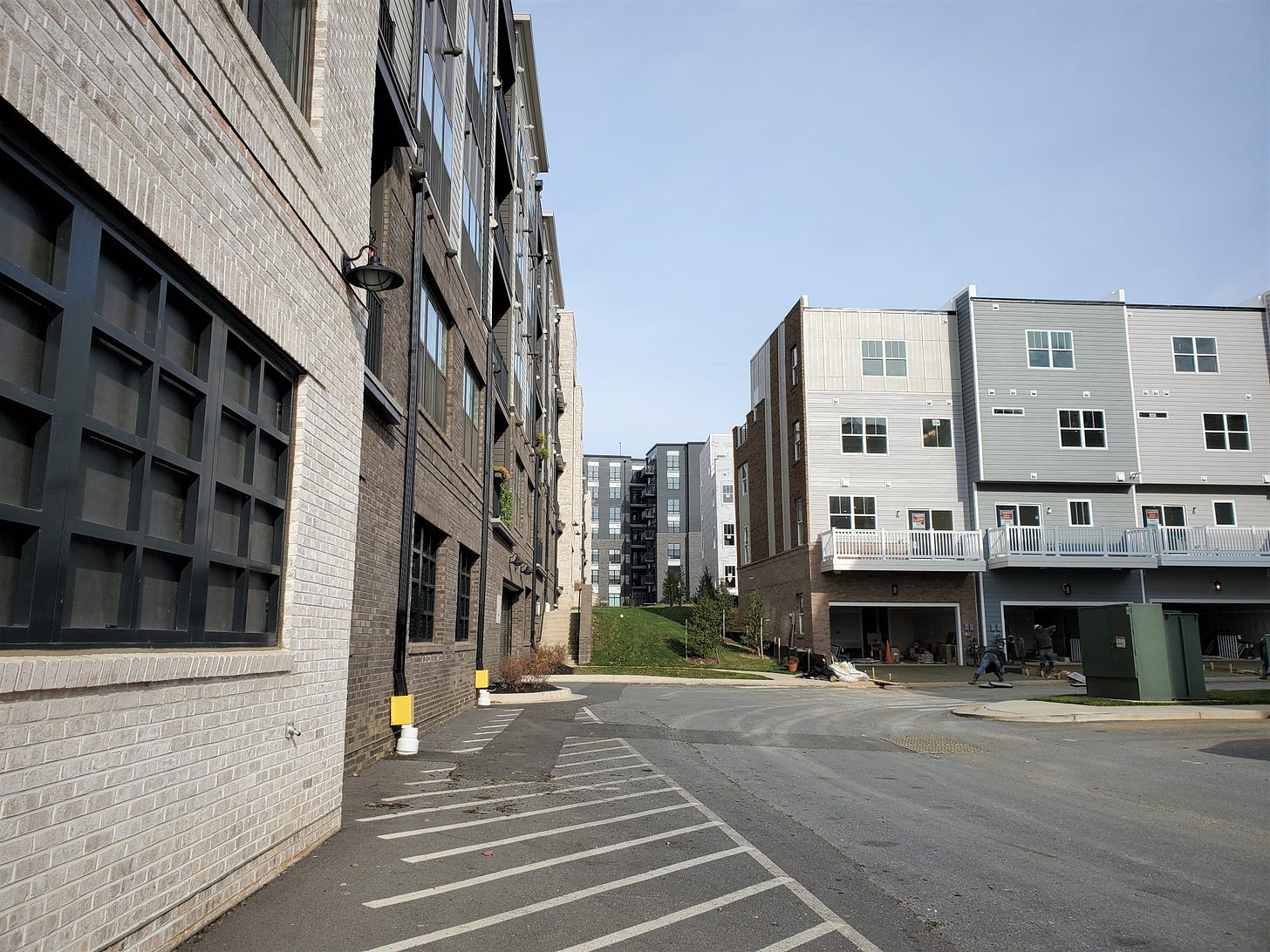
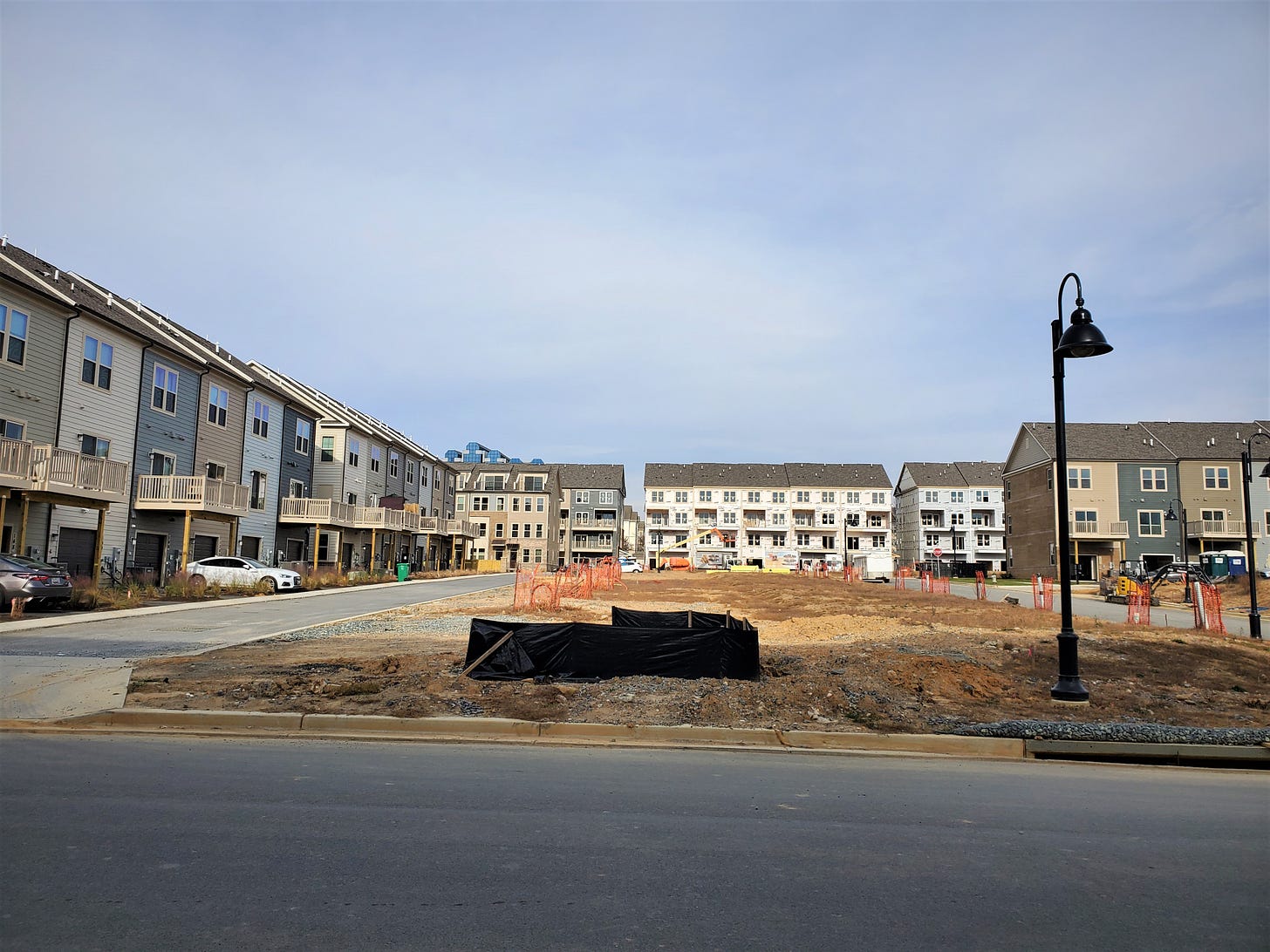
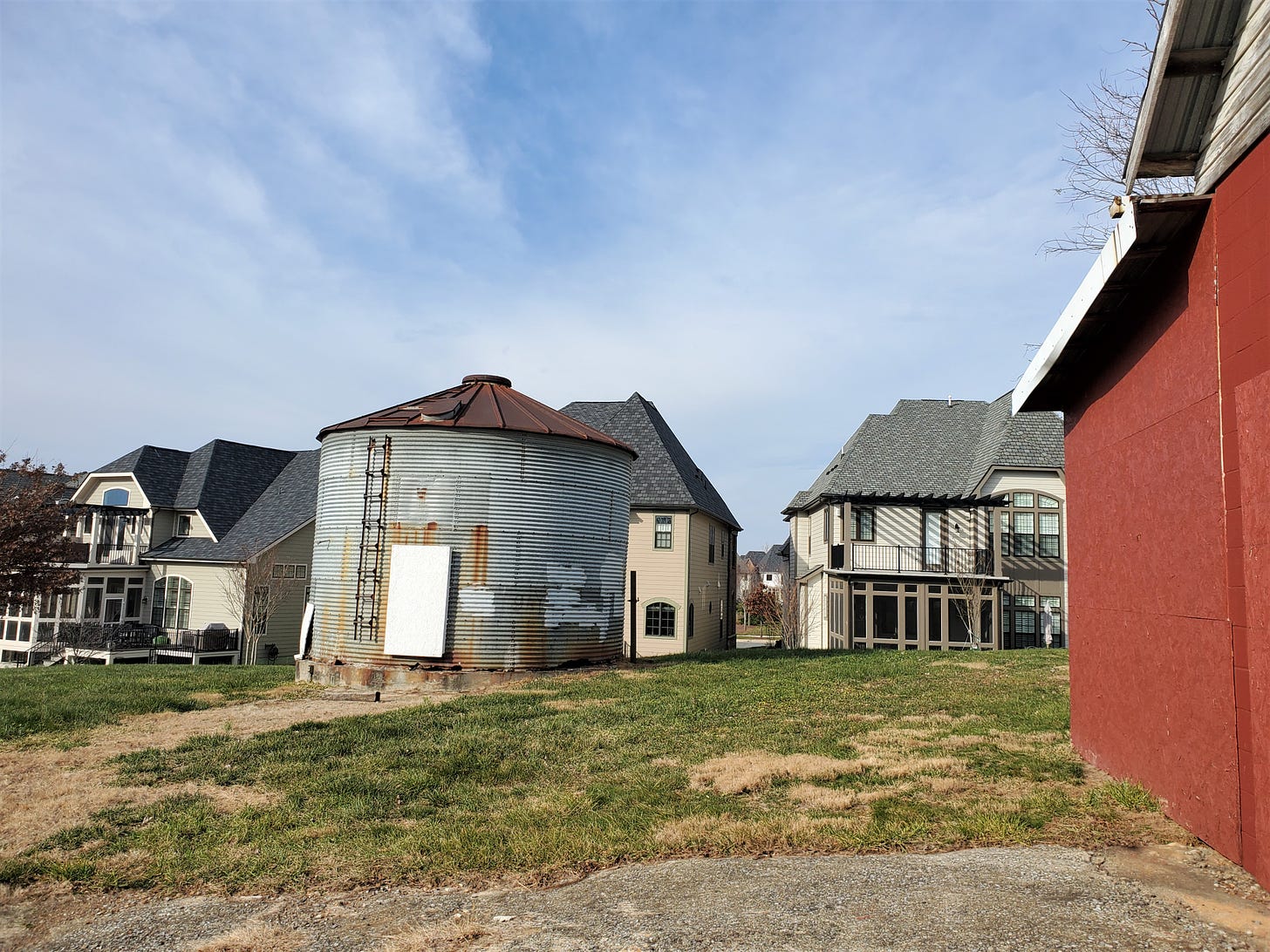


Chinese cities have a lot of ghost high rise at the outskirts and the old part of th city is often preserved. This gives the silhouette of a Chinese city the profile of a collapsed soufflé. You ever been there?
Yes, looks can be deceiving. In general, evaluating settlement patterns based on topology alone can be deceiving. Another layer of analysis is behavioral. How self-sufficient is this development? How many important things can you do without leaving the development?